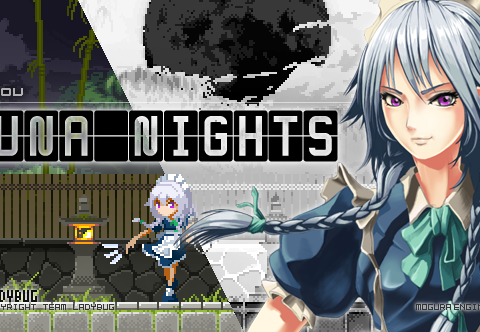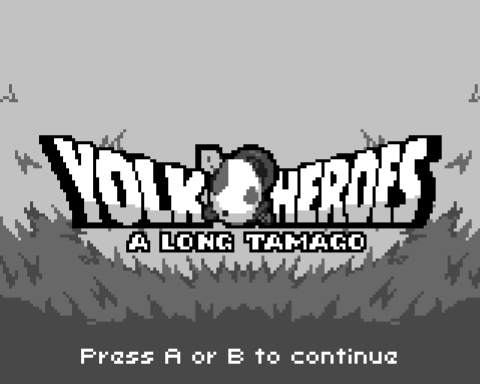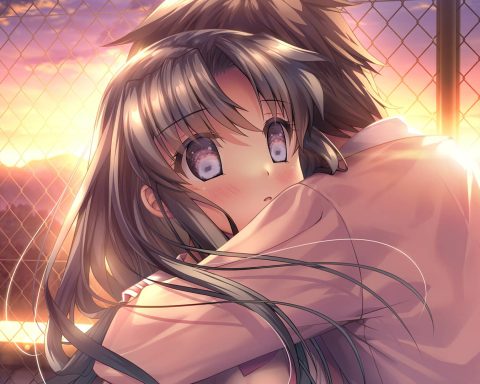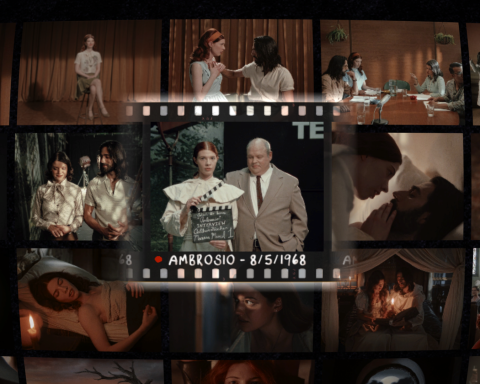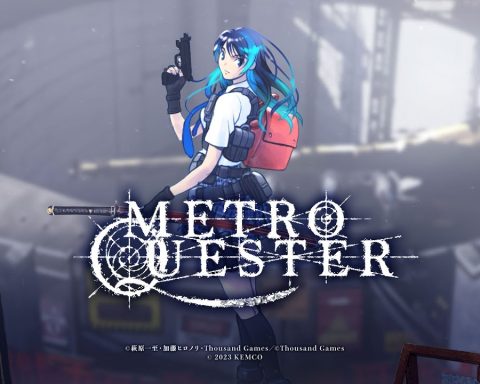Georges Bataille once wrote of Marquis de Sade that his intention was to “release dangerous movements and be their first victims.” The overtly fetishistic tone of Mary Skelter Finale is obvious within seconds of starting, and much like Sade, it proved too much for “polite society.” It is, apparently, dangerous. It has been banned in Australia. That naturally made me want to play it all the more, and I’m glad I was able to secure a copy (come at me, Australian censors), because Mary Skelter Finale is spectacular.
It is genuinely transgressive, from top to bottom. To start at the top: the transgressive visual elements are obvious at a casual glance. This is a game with copious, and unapologetic fan service, and beyond that, the nightmarish, fever dream-like dungeons and enemies all have a kind of sublime exquisiteness about them. My read on it all is as a whole lot of surrealist sexualisation, from the dungeons that feed on libido to the stalking nightmares that spur a mad dash whenever they spot you. This was all present in the previous two games, but it has been kicked up a notch in Finale, and while it’ll make some people uncomfortable, it’s a very Sadean discomfort. It’s smart about how grotesque it all is.
Sade was a critic of the establishment. He was a revolutionary, and the men in positions of power – the royalty, politicians and clergy – were the perverted monsters. That’s a reductionist reading of Sade, but for the academic study of his work and the purposes of this review, it’s the starting point. Mary Skelter Finale is Sadean in that it has its own power structures in its crosshairs. Specifically, fairy tales. To this day, fairy tales continue to be defined and redefined by our culture (and especially Disney) as a way of teaching moral virtue to children. Mary Skelter takes all that and makes it grotesque. Snow White, Red Riding Hood, Jack and The Little Mermaid all lick blood off one another to power up. If they’re not carefully managed they’ll go berserk and in a spectacular inversion of the magical girl fables of Japan (a kind of fairy tale in themselves), become hyper-violence and hostile to their allies. The very spaces they explore have a living, breathing quality that you’re meant to both pacify and penetrate. It’s actually quite amazing that it has taken three games for the Australian classification board to have finally had enough of Mary Skelter, but I guess that it has somehow all been too subtle for them until now.
This absolutely fascinating concept is backed up by some impressive thinking towards dungeon crawl design. Most notably, in Mary Skelter Finale, your heroes are broken up into smaller groups, and to make progress through the dungeons you need to control them asynchronously. So you’ll take control of one group of characters to flip a switch that will allow group B to progress, and they’ll have to then find a switch to let group A through a locked door of their own. The dungeons themselves are fairly standard in design, but this dynamic forces you to look at exploration in a different way and provides a strong narrative trail of breadcrumbs to follow. You’ll assume that the groups will meet up at some point (and you’ll hope so, since their split strength is always a detriment), but you’ll just never know how that will happen, and without giving anything away the game does play with that notion and, again, subverts many of your expectations.
This is all before you even start to look at the combat system, which takes a while to learn but is so layered, varied and complex that it really pushes what can be done with turn-based combat further, or the brilliant nightmare system. Like with the previous Mary Skelters, the combat might be turn-based, but exploration is real-time, and every so often the nightmares will spot you. When that happens, you have to flee (risking all the traps in the process) in a desperate hope that you can get away. These nightmares are incredibly powerful and a great source of tension when exploring – especially if you’re pushing into a new area and worried that a rapid retreat might leave you stuck in a dead-end…
There are only two downsides to all of this. Firstly, Mary Skelter Finale’s narrative takes a long time to get anywhere. Splitting groups up and giving equal screentime to a massive roster of characters does come at the detriment of pacing, and right from the start, you have to manage a two-hour cut scene before you’ll even get control of a character. Putting aside the quality of the fetishistic narrative and design, the story itself isn’t overly interesting, making Mary Skelter Finale a game with a higher standard of concept than execution (though it’s still hugely entertaining).
The second issue is that the game assumes that you’re deeply familiar with its two predecessors. You can sit through hours more catch up if you did miss those two titles – Finale has full summary cut scenes for both games – but that’s going to add hours of reading before you take the first step in any of the game’s dungeons. You’ll notice that I haven’t even bothered trying to explain what the story of Mary Skelter Finale is about. That’s not me being lazy, it’s just that there is absolutely no point, whatsoever, to even try to summarise why all these girls are trapped in breathing, horny dungeons, are licking blood off one another while relying on men to shoot them with special guns that stop them from going berserk. There’s just so much ground to make up that it would be futile to try… and the developers apparently realised this themselves, and so they didn’t even try. While I can’t imagine there are many people out there that would have Mary Skelter Finale the game that got them into the series, I’m sure there are some, and as wildly ambitious and expansive in scope as the game is, I would still think that the developers could have found a better way to onboard new players.
Those gripes aside, this is one of the most feature-rich, complex, aesthetically interesting and different dungeon crawlers, and the perfect cumulation of everything the little series has built up to. As an added bonus, players can also enjoy a full visual novel that Idea Factory has just thrown in there, as fan service, for these characters. The irony is that the “fan service” bonus has less sex-themed material than the base project is not lost on me, but if you enjoy the characters from the main game, then this little bonus adds a nice texture to the overall package. The background art and re-drawn character sprites (into school uniforms, since this VN is a school-themed tie in) is all gorgeous, too.
It’s a little disappointing that one of the most compelling and thought-provoking dungeon crawlers will be inevitably dismissed and derided because it’s fleshy and fan servicey. The Mary Skelter series is one of Idea Factory’s greatest achievements, being both mechanically deep and thematically rich, and Mary Skelter Finale is the complete realisation of the intent of the series. I’d never encourage Australians to break the law to access censored games, of course, but just remember those Nintendo Switch consoles are region free…
Matt S.
Editor-in-Chief
Find me on Twitter: @mattsainsb






